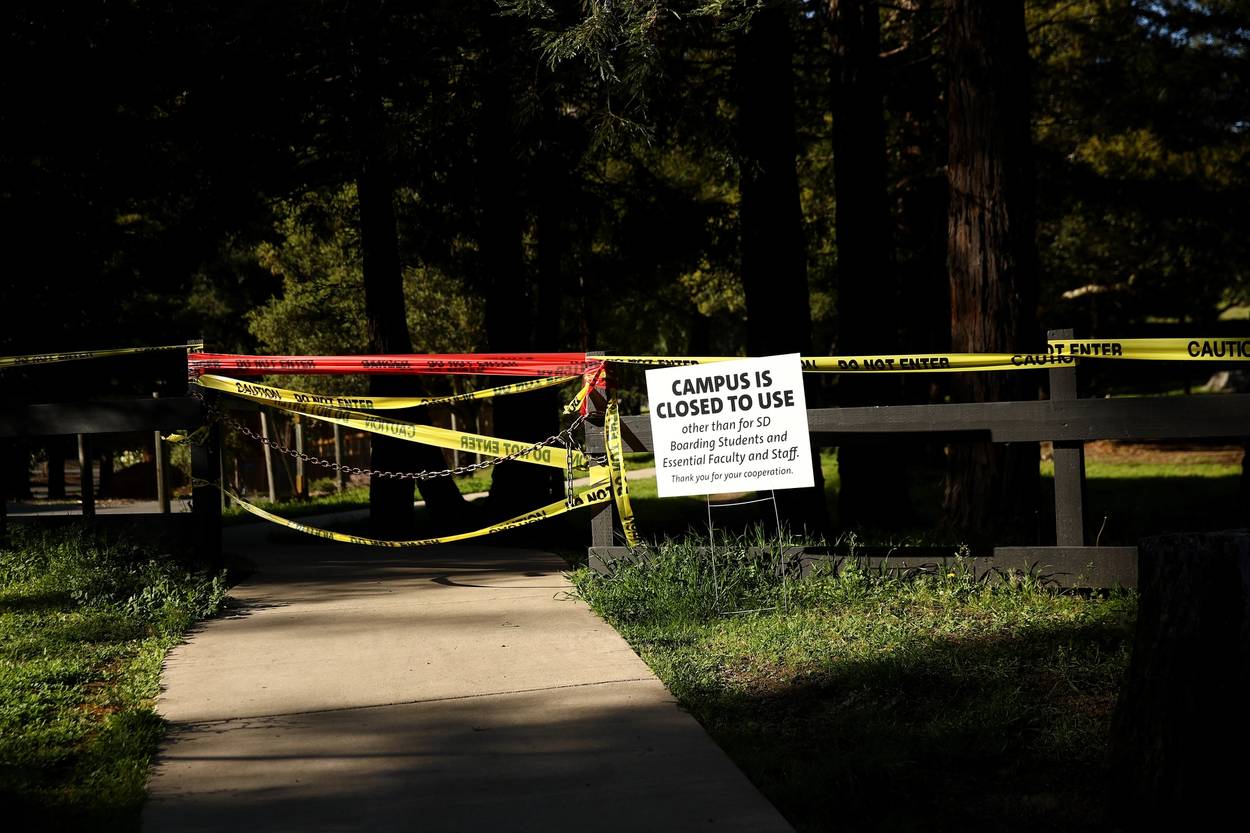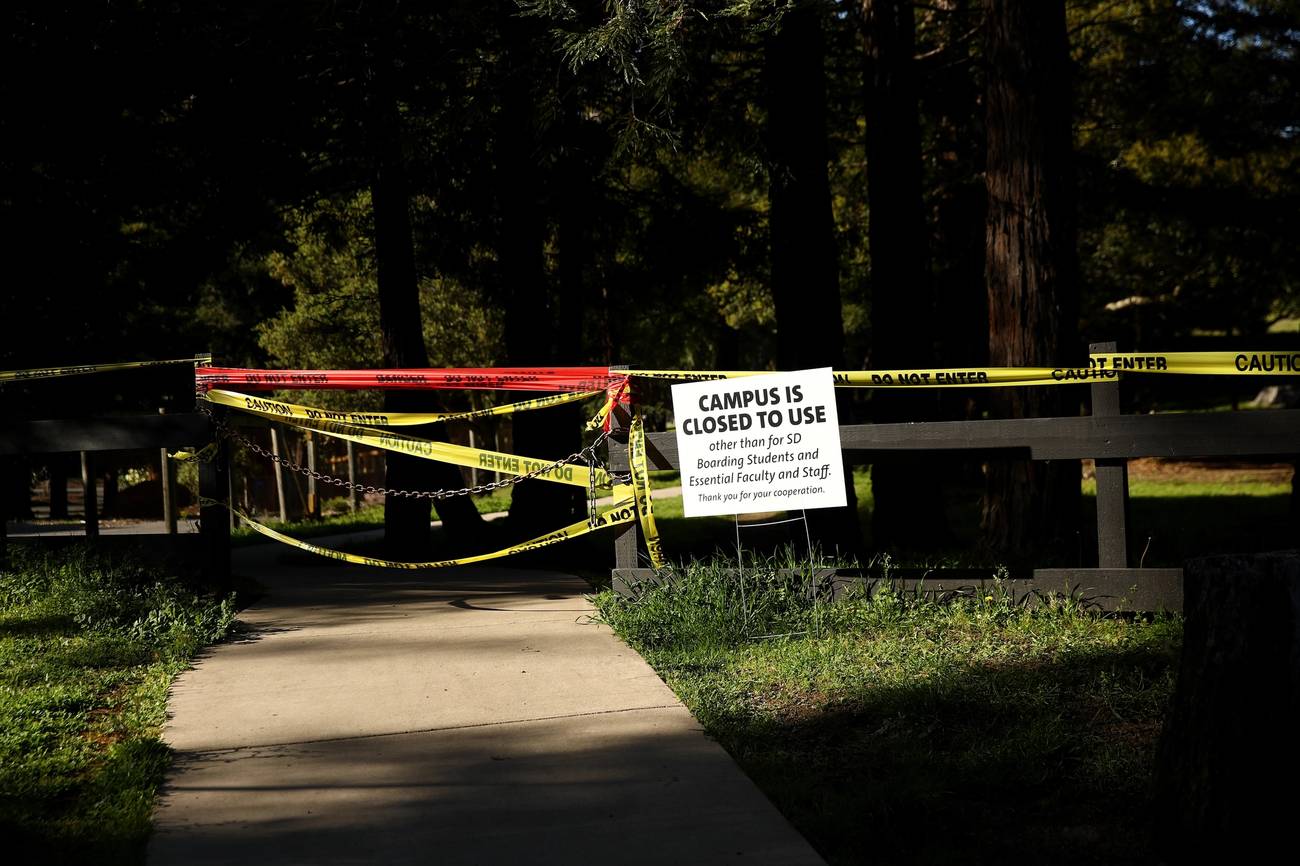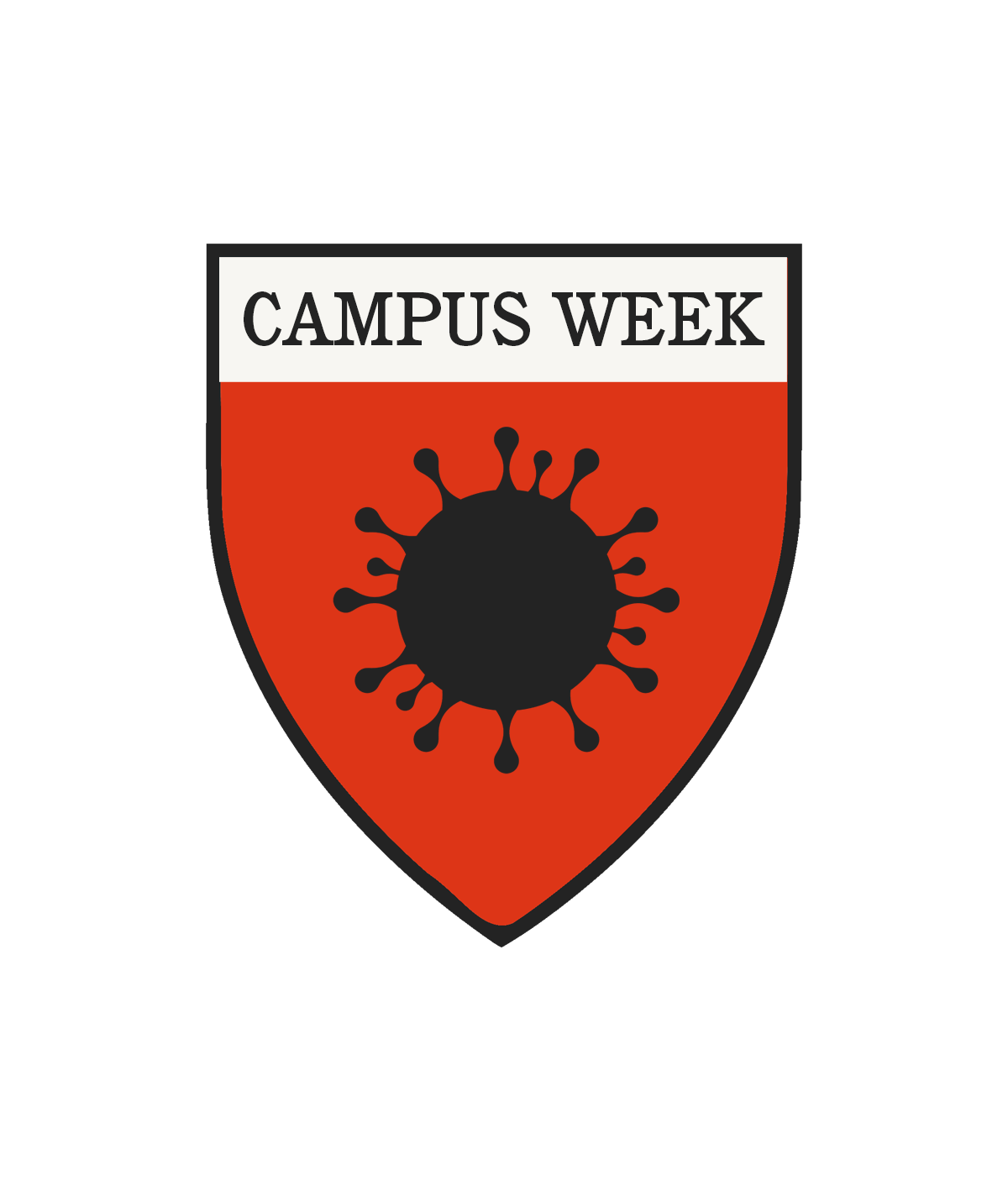The Sickness of Higher Ed
Campus Week: What college faculty and administrations should have done over the plague summer, and why we’re still not doing it




These are sick times. As September arrives and universities reopen across the United States, higher education is in even more disarray than usual. The answer to the big question of how to handle most teaching in higher education for this coming year has been clear since the end of spring: Go online for all of next year. Don’t invite students back to campus en masse. Getting this right early would have clarified how to proceed in other areas, from research to town-gown relations. Unfortunately, this strategy was not implemented early and enthusiastically (emphasis on the enthusiasm part) in order to prepare for a novel fall, which will now likely be a mess.
This essay will be a sermon. While many of our most august educational institutions were born as seminaries, they have lost their sense of holy mission. I don’t mean religion per se, but rather a felt sense of urgency and purpose. Let’s consider then what we should have done with higher education over the plague summer, why we’re not doing it, and why—let me be as blunt as possible—we, the faculty, share a large part of the blame.
One of the largest ironies of the university-industrial complex is that for all the incessant complaints from faculty about college and university administrators, often the top brass are former faculty. The leadership capacity of many of these administrators—that is to say, their ability to gauge the sentiments and guide the direction of the community, formulate advantageous policies for all, and communicate well with the relevant audiences—is what is left over from the training they received during their graduate studies, which is really to say there was never very much guidance at all. Scholars and scientists are not raised to be citizens of a republic of arts, sciences, and letters. The sole thing valued in elite academic culture is research, by which I mean formal citation within whatever metric system your discipline currently uses to measure achievement. But we need to be able to think not only about the formal results of whatever work in question we are examining, but about the structures, effectiveness, and oftentimes ineffectiveness of research itself—which our professional training positively discourages. We promote those who mimic the best practices of today, who add a few novel references to a literature review, not those who question the worth of our overgrown literature reviews.
It’s not an accident that Daniel Coit Gilman, the founder of the first research university in America, Johns Hopkins, did not himself hold a Ph.D. And as he wisely warned us in his inaugural address almost 150 year ago, “Universities easily fall into ruts. Almost every epoch requires a fresh start.” Healthy citizenship and leadership is messy, and involves conflicting values and aims that cannot be adjudicated in the clear, technical ways that supposedly define scholarship and science. As Lincoln noted in the midst of the Civil War, “As our case is new, so we must think anew, and act anew.” Today’s academy is led by people trained to be company men and women, promoted precisely because they are company men and women, who run our schools as if the institutions and their current ways provided the singular road to learning, knowledge, and enlightenment. One does not need to be a preacher to feel the need to exclaim, woe to those who mistake the current ways of the church for the Lord’s message itself. (I warned you this was going to be a sermon.) Rather, “We must,” to echo Lincoln once again, “disenthrall ourselves, and then we shall save our country.”
The objective of online courses and sparse campuses should have been declared early, affirmatively, and proudly, so that everything, not just classes, but everything from child care to library staffing to custodial maintenance could have been planned around it. Then we, from secretaries and staffers to scholars and surgeons, would have been able to prepare for the fall, safely, collectively—more on which below—and creatively. What happened was that those in charge weren’t brave enough to foster a different ethos.

Let me stress, at the outset, that this was not primarily about the money, nor am I only addressing our richest institutions (the easiest way to dismiss such critiques too often). Rather, examples of the ethos I am articulating here are sometimes most in evidence at smaller institutions of higher learning, like Paul Quinn College in Dallas. PQC has been experimenting recently with everything from lowering tuition to the creation of new honors and urban scholars programs to beta testing new online platforms with the students. Too often, it is the richest institutions that have the hardest time innovating. Ironically, money is sometimes as much of a burden as it is a blessing.
One of the first issues upsetting faculty this spring was the simultaneous fear that, A) online classes would be terrible, and B) that they would allow administrators to start replacing in-person teaching with virtual classes. Not that these two fears couldn’t have both been true, but it ought to be clear now that both of those were and are paranoid fantasies. Online education simply isn’t good enough─and is therefore highly unlikely ever to be a widely desired replacement for actual in-person instruction.
The other great fear, after the supposed trauma of the spring semester, was that many students would not return in the fall if there were only online classes. Since online classes, or Zoom school, or e-learning, (or whatever your mock affectionate coinage was for our collective virtual leap) was so awful, it would be just absolutely intolerable for another academic year. This was another paranoid fantasy. I’m going to outline three reasons, briefly:
1. The explosion of online learning outside of the university, and the popularity of summer classes
2. E-Classes turned out to be fine, provided a few modifications were made
3. The meritocracy can’t imagine learning happening in another setting
On the first point, what was most interesting to me in the weeks and months after Yale informed everybody at the beginning of spring break not to return to campus was the explosion of online classes of all sorts. In other words, the sudden elimination of in-person classes created an increase in the number of classes available online. My mother joked that she had to make sure not to spend all day in front of the computer on Zoom classes, and she now, months after the start of the pandemic, still lets me know about what classes or lessons she sees that I might enjoy.
Nor was this happening simply with classes that don’t count for college credit. The most important proxy for the fall, the one that so many schools would actually have had the data for, were summer classes, and from what little data is publicly available, they grew tremendously. Summer course enrollment at UPenn increased by 30%; at Texas A&M enrollment increased by 18%, and the University of Texas at El Paso saw a record number of summer students for its two sessions.
A few of my students and advisees, unable to pursue their original summer plans, opted to take summer classes. And as another student of mine, who has spent his summer on fellowship largely reading at home noted that many of his friends are trying to fulfill the distribution requirements: “I mean, it makes sense, without anything else to do, why not get some of the classes out of the way!”
None of this should have been a surprise. Having taught in the spring and speaking with my students extensively about it (more on this below), what became most clear about online learning was that it was ... fine. It had a rocky start, but how could it not? Nevertheless, by the end of the semester, my classes concluded quite well. Despite the spatial, technological, and chronological changes (for one of my courses, we moved it to evenings, around 8:30 p.m., after my own kids’ bedtimes) it had been so good, the ending was painful, like a rupture, as if a dynamic connection had been cut, because in fact, that is exactly what had happened.
One of the first things I did, when the semester went online in order to modify my classes was to modify my relationship to the students. I sent them my phone number and told them to call if they needed anything. I started an email chain with all the students to send out articles of note, relevant to the times, or just worthwhile. Only a few sent out pieces themselves, but I got many responses saying they appreciated the articles and views being sent around because they started pertinent discussions outside of class/Zoom. I started having office hours by phone as I walked the dog in the afternoon. I opened my classes on Zoom by checking in with my students about how things were for them. I treated them like people.
Many other faculty did similar things. A friend teaching a research course in history scrapped her class altogether and just started meeting with each student individually about their main research project. Yes, it meant less ability to collectively share research insights among her students, but on the other hand, the students were less able to hide in class now and each got more sustained attention and supervision. Another friend of mine, a chemistry professor, had class include more problems to work on together, which improved engagement. In other words, as long it was recognized that it was best not simply to try and carry on as before, but to adjust in whatever ways one could (and there are always ways one can), things were, overall, good. Yet, from speaking to my students, however, what I can confirm was that it was hardly the norm to change things up.
Why the false pretense of competence and ‘it’ll all be fine’ when it’s clear that things are not fine, and will have to be done differently?
What underlies the examples mentioned above is an emphasis on more direct back and forth with the students. And there’s a larger lesson here, which would be clear to the administrators if they taught more. One of the great illusions of online education was that it could scale up radically; it doesn’t. The sense that online education is different, and could scale, is not wrong. It scales down!
Good teaching involves communication. Good communication involves a host of connections, each reinforcing and catalyzing the other. Being online, however, involves less eye contact, less ability to read each other’s faces, less audio clarity, more lag time between speakers, etc. Online education is a boon, if we could see it for what it is, which for the first time, so many finally have. It often increases, not decreases costs (check your budgets!)—which would be obvious if we weren’t so inundated with quantitative efficiency consulting crap.
The added detachment and distancing of online learning makes the direct, personal, connection all the more important. Sadly, that’s exactly what professors are often afraid of.
The central question was what should have been done about teaching, and the simple answer was the opposite of the one that was implemented. John Maynard Keynes was the greatest economist of the 20th century for many reasons, but perhaps the most important reason was his argument that when a crisis hits, expand, don’t contract: Give people jobs; increase the deficit; juice investment however you can, and, in the notable phrase he immortalized, tap the “animal spirits.” In Keynes’ magnum opus, The General Theory of Employment, Interest, and Money (1936), the full staccato sentence reads: “Most, probably, of our decisions to do something positive, the full consequences of which will be drawn out over many days to come, can only be taken as the result of animal spirits—a spontaneous urge to action rather than inaction, and not as the outcome of a weighted average of quantitative benefits multiplied by quantitative probabilities.”
We never tried to tap the animal spirits. We did the opposite. We hunkered down; we contracted; we were defensive. We could and should have done the opposite.
And what would that have meant? Consider one possibility. Instead of announcing a hiring freeze for faculty and layoffs among staff, as many of the richest universities did (and then, of course, reversed course), imagine if the provost of your institution had—now, pause, take a deep breath, and fantasize with me—instead of a hiring freeze, the provost had announced a hiring expansion. Imagine if they had said, “We’re going to set an example, and we’re going to improve teaching and learning despite this setback. In fact, we’re going to use this obstacle to improve our game, and we’re going to do it together!”
Imagine how much a shot in the arm it would have been institutionally for someone to say something like: “We’re going to cut the frills (no more dining budgets, friends), but we’re going to really do teaching right.”
Think of the impact if the president of a really rich university had said, “We’re not just going to rehire all our adjuncts/lecturers/post-docs, we’re going to hire 100 new teachers! Online teaching is obviously the only safe thing to do, and we’re going to do it in the very best way.”
Imagine if they had been brave enough to say, “Yes, of course, we’ll do what universities always do, we’ll put together multiple committees to establish best practices, but, really, most importantly, we’re going to hire lots of desperate, I mean, fresh people for a year to teach. Their mandate is to be creative. Let’s do it!”
Imagine if some visionary president had said, “Two things are important for good online classes: A) making them really small and intensive, and B) we have no idea, so, all of you, take the summer to design new and interesting courses that involve other kinds of learning. You’ll be hired—you can breathe, and now you’ll get the chance to experiment!”
What I’ve had to say is no more fantastical; in fact, it’s a lot less fantastical than the magical and unsafe plans many campus leaders have been pursuing or proposing for months (before having to, of course, reverse course in the last few weeks). Brown University’s president published an op-ed in The New York Times in April laying out an illusory blueprint for the fall advocating an approach she called: “test, trace and separate.”
The problem is that students don’t separate. They come to college for intercourse, and I don’t only mean the physical kind either. I’ve spent the summer chatting with more than a few of them, and it’s clear how hungry they are to see each other. The intense nature of college is not going to be diluted because of directions from the deans, and in fact, will be even more enticing because of the restrictions. Speaking of living in dream worlds, I’ve never once seen these realities addressed explicitly by anybody in any sort of administrative capacity.
It’s worth stressing here the truly awful nature of the communication by many of these institutions, especially the goliaths who maintain teams of people in charge of communications. The infrequent emails; the carefully worded and formatted ones that conceal and hedge rather than bring to the fore, state, and face directly the issues we all know about and are all attempting to wrestle with; the surprise announcements—seriously, why are any of these decisions coming as surprises?; the unreal town halls, meetings, and discussions in which none of the hard questions are raised or discussed openly. Why the false pretense of competence and “it’ll all be fine” when it’s clear that things are not fine, and will have to be done differently?
Universities keep aiming for the status quo ante because the people who are in charge can’t easily imagine anything else, having built their lives and identities around a certain type of scholastic success. They don’t believe in education; they believe in the form of education they had, since it’s all they know. They have mistaken the form for the content, and therefore we’ve all spent the summer trying to preserve the forms, and often, reversing course at the last second.
In the famous preface to his all too infrequently read and quietly iconoclastic work, The Liberal Imagination, Lionel Trilling notes how liberal ideas and habits, initially so attentive to the emotions and the imagination, over time tend to contract and calcify: “And in the very interest of affirming its confidence in the power of the mind, it inclines to constrict and make mechanical its conception of the nature of the mind.” It’s a dangerous thing when education, ideally a place for experimentation and creativity (and the wisdom of the ancients, to boot), itself becomes an idol.
Where there is no vision, the people perish. Right now, there is no vision.
Mordechai Levy-Eichel is a lecturer in the Humanities Program and the Political Science Department at Yale University.